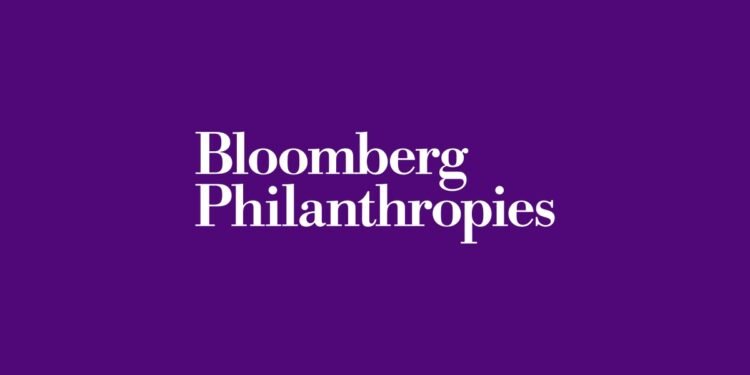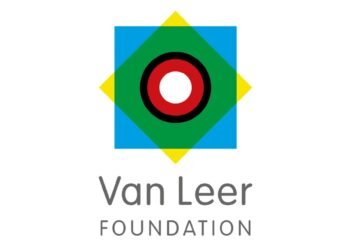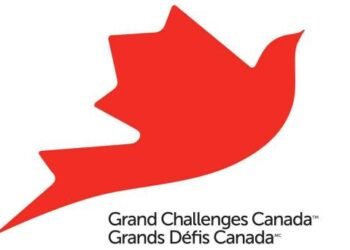What if one person’s wealth could transform cities, combat climate change, and revolutionize public health worldwide? Michael Bloomberg’s extraordinary commitment through his family foundation challenges us to rethink what’s possible when vast resources meet strategic vision.
Based in New York, this remarkable organization represents one of America’s largest philanthropic efforts. The foundation focuses its substantial resources on five critical areas that affect communities globally.
From environmental action to arts support, their work creates real progress. The organization’s strategic approach ensures every dollar creates maximum impact where it’s needed most.
Key Takeaways
- Represents Michael Bloomberg’s comprehensive charitable giving platform
- Headquartered in New York City at the historic Stuyvesant Fish House
- Focuses on five core areas including environment and public health
- Ranked among the top 10 largest foundations in the United States
- CEO Patti Harris leads global implementation of strategic programs
- Combines direct funding with advocacy and partnership approaches
- Maintains global perspective while rooted in New York operations
Introduction to a Global Philanthropic Force
Long before establishing his formal foundation, Michael Bloomberg was already making significant charitable contributions. His giving journey started during his leadership at his financial information company.
He supported medical research, education, and arts organizations generously. Bloomberg also served on boards of various charitable institutions during this period.
His consistent philanthropy earned him recognition starting in 2004. The Chronicle of Philanthropy listed him among America’s top 50 donors that year.
Between 2004 and 2011, he maintained his position as a top 10 American philanthropist annually. This demonstrated his sustained commitment to charitable causes.
Recent years have seen unprecedented giving levels from the Bloomberg family foundation. In both 2023 and 2024, he was recognized as the largest charitable donor globally.
The 2024 distribution reached $3.7 billion through various organizations and initiatives. This represents one of the largest annual philanthropic disbursements in history.
This evolution from personal giving to structured foundation represents a significant scaling of impact. The foundation now operates as a comprehensive global platform rather than isolated charitable acts.
This growth mirrors both business success and philosophical commitment to “giving while living.” The approach ensures resources create maximum impact around the world.
The Five Core Focus Areas of Impact
Five distinct yet complementary initiatives form the backbone of this foundation’s approach to creating lasting change worldwide. Each area represents a strategic investment in solving complex global challenges.
The organization channels its substantial resources through these interconnected channels. This multi-faceted strategy ensures comprehensive community development and sustainable progress.
Combating Climate Change and Promoting Clean Energy
Environmental initiatives represent a major commitment to planetary health. The foundation supports clean energy transitions and sustainable urban development.
Coal phase-out programs and climate action partnerships drive significant reduction in carbon emissions. These efforts address one of the most pressing global challenges of our time.
Advancing Public Health Initiatives Worldwide
Public health programs save lives through evidence-based strategies. Tobacco control using the MPOWER approach has shown remarkable success globally.
Road safety initiatives reduce traffic fatalities while disease eradication efforts continue the fight against polio. Each program targets preventable health issues with measurable outcomes.
Fostering Arts and Culture in Communities
Cultural investments strengthen community identity and creativity. The foundation supports both established institutions and innovative public art projects.
Digital technology integration helps cultural organizations reach wider audiences. This commitment to arts enriches quality of life across diverse communities.
Driving Government Innovation and Efficiency
Municipal operations benefit from data-driven approaches and specialized delivery teams. Innovation programs help city governments serve residents more effectively.
These initiatives transform how local governments operate and deliver services. The result is more responsive and efficient public institutions.
Supporting Educational Advancement and Opportunity
Educational initiatives create pathways to success for individuals of all ages. Programs address learning disparities and improve outcomes through strategic interventions.
Bloomberg Philanthropies invests in opportunities that transform lives through knowledge and skills development. This focus area builds stronger futures for communities worldwide.
Each of these five areas operates with clear success metrics and substantial funding. Together they create synergistic impact that addresses both immediate needs and long-term challenges.
The Founding and Scale of Bloomberg Philanthropies
Many major philanthropic entities begin with quiet, personal giving before evolving into structured organizations with global reach. This transition represents a critical evolution in how charitable resources create lasting change.
The origins of this remarkable family foundation trace back to nearly a decade of anonymous support. Through the Carnegie Corporation of New York, an unknown donor funded almost 600 arts and social-service groups.
This early effort demonstrated a deep commitment to community development. Most observers believed Michael Bloomberg was behind these generous contributions.
From Personal Giving to a Formal Foundation
December 2006 marked a significant turning point in this philanthropic journey. The Bloomberg Family Foundation was formally established during this period.
This move structured what had previously been more informal charitable activities. The new organization brought strategic focus to diverse causes across multiple communities.
The foundation’s growth has been substantial since its creation. By 2015, net assets had reached $7.15 billion through additional contributions and investment growth.
Financial Commitment and “Giving While Living” Philosophy
Michael Bloomberg embraces the “giving while living” approach championed by other major philanthropists. This philosophy emphasizes active philanthropy during one’s lifetime rather than through posthumous gifts.
The approach allows for direct oversight and adjustment of strategies. It ensures resources create maximum impact where they’re needed most.
With an estimated net worth of $49 billion as of 2017, his commitment represents one of history’s largest philanthropic pledges. The majority of his wealth will support charitable causes during his lifetime and his daughters’ lifetimes.
This substantial financial base enables the foundation to tackle complex, multi-year initiatives. The scale allows for both immediate impact and long-term sustainability through careful endowment management.
Key Environmental Programs and Campaigns
Environmental protection stands as a cornerstone of the foundation’s global strategy. These initiatives tackle urgent ecological challenges through targeted action and strategic partnerships.
Major campaigns address fossil fuel reduction and sustainable urban development. Each program combines scientific research with practical implementation for measurable results.
The Beyond Coal and Beyond Carbon Initiatives
The foundation’s partnership with the Sierra Club launched a transformative campaign in 2011. An initial $50 million donation targeted coal-fired power plant closures across America.
This investment grew significantly over the following years. A 2015 pledge of $30 million accelerated the goal of closing half of U.S. coal plants by 2017.
The initiative expanded globally with European operations starting in 2017. This expansion aimed for continental coal phase-out by 2030, with Asian operations beginning in 2020.
Beyond Carbon emerged as the natural evolution of this successful work. In 2023, a massive $500 million commitment targeted natural gas and combustion vehicles.
The Beyond Petrochemicals campaign launched in 2022 with $85 million. This effort focuses on blocking construction of over 120 planned petrochemical plants.
America’s Pledge and U.S. Climate Action
America’s Pledge formed in response to national policy changes regarding international agreements. This initiative coordinates climate action among state leaders, city officials, and business networks.
The program ensures continued progress despite shifting federal policies. It represents a bottom-up approach to environmental protection and sustainable development.
This collaborative model demonstrates how subnational actors can drive meaningful change. The effort maintains momentum for climate progress across diverse American communities.
Partnerships with C40 Cities and Ocean Conservation
Urban networks play a crucial role in the foundation’s environmental strategy. The C40 Cities partnership leverages municipal leadership for climate action worldwide.
This collaboration builds on extensive experience in urban governance and sustainability. Cities represent critical fronts in the battle against environmental degradation.
Ocean conservation received significant attention through a major four-year commitment. A $185 million partnership with OceanX focuses on marine protection initiatives.
This represents one of the largest philanthropic commitments to ocean preservation. The effort addresses critical threats to marine ecosystems around the world.
These comprehensive programs demonstrate how strategic philanthropy can drive environmental progress. Each initiative combines adequate resources with evidence-based approaches for maximum impact.
Major Public Health Efforts and Achievements
The battle against preventable diseases and injuries receives substantial support through comprehensive public health initiatives spanning multiple continents. These programs address critical health challenges with evidence-based strategies that deliver measurable results.
Strategic investments target the root causes of health disparities in vulnerable communities. Each initiative combines adequate funding with proven methodologies for maximum impact.
Global Tobacco Control and the MPOWER Strategy
Tobacco reduction represents the largest public health investment from this foundation. Cumulative funding reached $1 billion by 2016 through the evidence-based MPOWER approach.
The strategy focuses particularly on low- and middle-income countries. These regions face significant burdens from tobacco-related diseases.
In March 2012, the organization donated $220 million to fight tobacco use over four years. This substantial commitment accelerated global anti-tobacco efforts.
Data for Health Initiative and Disease Eradication
The Data for Health initiative launched in 2015 with $100 million in funding. This program helps 20 countries improve public health data collection systems.
Better data leads to more effective health policies and interventions. The initiative strengthens health infrastructure in participating nations.
Disease eradication efforts include a $100 million contribution in 2013. This supported polio elimination campaigns in partnership with other major health organizations.
Road Safety and Drowning Prevention Programs
Road safety programs began with a $125 million partnership with WHO in 2009. An additional $125 million commitment followed in 2014.
These efforts target traffic fatalities in vulnerable communities worldwide. The programs implement proven safety measures and education campaigns.
Drowning prevention specifically addresses Bangladesh, where it’s the leading cause of child death. The 2019 program introduced childcare and monitoring solutions.
Women’s health initiatives include $50 million for global family planning. Maternal health programs in Tanzania received $8 million in support.
Obesity prevention successfully supported Mexico’s sugar-sweetened beverage taxes. This resulted in 12% consumption reduction in the first year.
Innovation in City Governance: The Mayors Challenge
How can municipal leaders tackle their most pressing urban challenges with fresh thinking and limited budgets? The Mayors Challenge provides a powerful answer through competitive grants that spark creative solutions.
This signature innovation program encourages city governments to think differently about persistent problems. It rewards bold ideas that can create meaningful change in urban communities.
Fostering Creative Solutions in U.S. Cities
The American edition launched with remarkable success. In March 2013, Providence, Rhode Island won the $5 million grand prize.
Their winning proposal addressed language skills deficits in low-income children. This innovative approach demonstrated how cities could tackle education gaps creatively.
Four other cities received $1 million each for their proposals. Houston, Philadelphia, Chicago, and Santa Monica implemented diverse urban solutions.
The 2018 competition continued this tradition of innovation. Nine American cities received funding for addressing critical urban issues.
These included homelessness, climate adaptation, and the opioid crisis. Each solution reflected local needs and creative governance approaches.
Expanding the Model to Europe and Latin America
The program’s success led to international expansion. European cities joined the challenge in September 2014.
Barcelona won €5 million for improving elderly residents’ quality of life. Their community programs showed how cities could better serve aging populations.
Athens, Kirklees, Stockholm, and Warsaw each received €1 million. Their proposals addressed diverse urban challenges across the continent.
Latin American implementation began in 2016 with impressive participation. Nearly one-third of major cities in the region joined the competition.
São Paulo, Brazil won the $5 million grand prize for connecting farmers to urban markets. This innovative approach strengthened local food systems and reduced waste.
Medellín, Bogotá, Santiago, and Guadalajara received $1 million each. Their programs addressed transportation, sustainability, and economic development.
Complementary initiatives strengthen this urban innovation network. What Works Cities provides $42 million to help 100 mid-sized American municipalities.
This program focuses on data-driven decision making for better governance. It represents another aspect of the foundation’s urban strategy.
Innovation Delivery Teams received $45 million in 2014 funding. These specialized units help streamline municipal operations and service delivery.
Together, these efforts represent a comprehensive approach to urban improvement. They provide resources, expertise, and recognition for innovative local governance.
The Mayors Challenge continues to inspire cities worldwide to think bigger. It demonstrates how strategic support can unlock creative solutions to urban challenges.
Geographic Strategy: A Focus on Cities and Global Hotspots
Urban centers serve as natural laboratories for testing innovative solutions to complex global challenges. The foundation’s geographic approach recognizes that cities concentrate both problems and opportunities.
This strategic focus allows for manageable testing of interventions before potential expansion. Successful urban programs can then scale to regional or national implementation.
Partnerships with networks like C40 Cities leverage deep urban governance expertise. These collaborations create powerful alliances for addressing climate and other pressing issues.
The organization identifies global hotspots where interventions achieve disproportionate impact. Careful analysis determines where resources create maximum change.
This approach balances depth in specific locations with breadth of learning. Lessons from one community can inform efforts in diverse contexts around the world.
Urban concentration aligns with global demographic trends toward increasing urbanization. Cities represent where challenges and opportunities increasingly concentrate.
The geographic strategy remains dynamic, evolving based on emerging needs. Partnership opportunities and demonstrated effectiveness guide resource allocation.
This method ensures relevance across diverse cultural and political contexts. Local implementation maintains global vision and consistency of purpose.
The foundation’s approach represents sophisticated philanthropic targeting. It maximizes impact while respecting local autonomy and knowledge.
Strategic Partnerships for Amplified Impact
Strategic alliances multiply the effectiveness of philanthropic investments through shared expertise and expanded reach. The foundation carefully selects partners whose capabilities complement its own strategic objectives.
These collaborations create powerful synergies that achieve more than any single organization could accomplish alone. Each partnership represents a deliberate choice to maximize impact across diverse communities.
Collaborations with the Sierra Club and Everytown
The Sierra Club partnership represents one of the most significant environmental alliances. Cumulative donations reached $110 million by 2015 for the Beyond Coal campaign.
This collaboration successfully accelerated the transition away from fossil fuels. It demonstrated how environmental progress could be achieved through strategic partnerships.
Everytown for Gun Safety received a $50 million commitment in 2014. This created one of America’s largest gun violence prevention organizations.
The investment supported evidence-based approaches to reducing firearm injuries. It showed how philanthropy could address complex social causes.
Alliances with the Gates Foundation and Other Major Philanthropies
The Bill & Melinda Gates Foundation partnership spans multiple critical areas. A $100 million collaboration supported global polio eradication efforts.
Joint initiatives also address tobacco control and public health data systems. These alliances combine resources and expertise for greater change.
Media partnerships include work with RadicalMedia and National Geographic. Environmental documentaries like “From the Ashes” reached broad audiences.
Government collaborations feature the $100 million Data for Health initiative with Australia. This improved public health information systems in twenty countries.
Urban climate partnerships with C40 Cities leverage municipal leadership worldwide. The network drives carbon reduction in major urban centers.
Ocean conservation includes a $185 million commitment with OceanX. This represents a major private-philanthropic partnership for marine protection.
A 2022 collaboration with nine other foundations committed $1 billion to ocean conservation. This demonstrates the ability to coordinate complex multi-party initiatives.
These strategic alliances amplify the foundation’s work across environmental, health, and social causes. They represent a sophisticated approach to creating lasting change worldwide.
Leadership and Operational Structure
Strong leadership and effective governance form the backbone of any successful philanthropic organization. The operational framework ensures that strategic vision translates into meaningful action across diverse initiatives.
This family foundation combines professional management with deep institutional knowledge. The structure balances oversight with flexibility to address emerging challenges.
The Role of CEO Patti Harris
Patti Harris brings decades of experience to her leadership role. She began working with Michael Bloomberg in 1994, developing a comprehensive understanding of his operations.
Her background spans both business and governmental sectors. Harris previously held leadership positions at Bloomberg L.P. before joining the New York City mayoral administration.
This unique combination of experiences provides valuable insight. She understands how to translate vision into practical programs that create real change.
Harris oversees the implementation of strategic initiatives worldwide. Her leadership ensures consistency across diverse focus areas from environmental action to public health efforts.
Board Composition and Governance
The board includes notable individuals from various backgrounds. Initial members included prominent figures like Cory Booker and Jeb Bush.
This bipartisan approach reflects the foundation’s commitment to transcending political affiliations. The governance structure values diverse perspectives on critical issues.
Board composition has evolved based on strategic needs and philosophical alignment. In 2015, Elaine Chao resigned over disagreements regarding environmental investments.
Current members include experienced leaders like former U.S. Senators David L. Boren and Sam Nunn. Former Miami Mayor Manny Diaz also contributes valuable urban governance expertise.
The board provides strategic oversight while allowing operational flexibility. This balance enables the organization to respond effectively to emerging opportunities.
Governance practices ensure resources create maximum impact where needed most. The structure supports both immediate action and long-term planning across all program areas.
Perspectives and Discussion on Bloomberg’s Philanthropic Approach
Philanthropic giving often reflects the personal values and policy priorities of its benefactors. The family foundation demonstrates this alignment through its strategic focus areas.
This approach creates powerful synergies between charitable giving and advocacy work. It represents a comprehensive strategy for driving social change.
Aligning Philanthropy with Policy and Advocacy Goals
The foundation’s giving often mirrors Michael Bloomberg’s policy priorities. This integration creates a unified approach to addressing complex social issues.
Environmental initiatives align with climate advocacy efforts. Public health programs complement policy work on tobacco control and disease prevention.
This coordinated strategy amplifies impact across multiple sectors. It represents a sophisticated approach to creating lasting progress.
The organization maintains that its giving prioritizes measurable outcomes. Strategic alignment ensures resources create maximum impact.
Addressing Criticisms and Controversies
Like many major philanthropic efforts, this approach has faced scrutiny. Critics question potential conflicts between personal, political, and philanthropic interests.
During his mayoral tenure, questions emerged about resource allocation. Some alleged improper use of city funds for foundation operations.
Investment practices drew attention when reports revealed offshore holdings. The foundation had approximately $300 million in Cayman Islands investments in 2010.
Support for restrictive policies generated controversy about personal freedom. Initiatives like soda taxes and smoking bans faced “nanny-state” criticism.
Some allegations suggested philanthropic giving rewarded political allies. Other claims indicated it punished opponents, though these remain disputed.
The NYU Law School partnership faced conflict-of-interest concerns. Environmental litigation support through the State Energy and Environmental Impact Center drew particular attention.
Despite these criticisms, the foundation maintains strict legal compliance. It emphasizes that measurable outcomes guide all giving decisions.
The organization continues its work across environmental, health, and urban causes. It remains focused on creating positive change in communities worldwide.
Recent Initiatives and Future Direction
How does a major foundation maintain momentum while adapting to emerging global challenges? The answer lies in continuously evolving strategies that build on past successes while exploring new frontiers for impact.
Recent announcements demonstrate this dynamic approach to philanthropy. New programs expand geographic reach while deepening commitment to proven initiatives.
The Bloomberg American Sustainable Cities Program
March 2024 marked a significant urban sustainability commitment. The foundation pledged approximately $200 million to 25 American municipalities.
This innovative program supports practical climate solutions at the local level. Funding focuses on energy-efficient housing and electric vehicle infrastructure.
Selected cities represent diverse regions and challenges. Akron, Birmingham, Charlotte, Montgomery, Nashville, and Hampton are among the participants.
Each community receives tailored support for sustainability projects. The approach recognizes that local contexts require customized solutions.
Ongoing Commitments and Evolving Strategies
September 2023 brought a massive reinforcement of climate efforts. An additional $500 million commitment expanded the Beyond Carbon initiative.
This investment targets natural gas reduction and transportation electrification. It builds on previous successes in coal plant retirement campaigns.
International expansion continued significantly in 2022. A $242 million commitment launched clean energy efforts in ten developing nations.
These countries include Bangladesh, Brazil, Colombia, Kenya, and Mozambique. Nigeria, Pakistan, South Africa, Turkey, and Vietnam also joined the network.
Future direction combines geographic expansion with program deepening. The foundation continues learning from implementation experience.
Emerging opportunities and changing circumstances guide strategic evolution. This ensures resources create maximum impact where needed most.
The organization maintains its focus on measurable outcomes. Each initiative includes clear success metrics and evaluation frameworks.
This approach demonstrates how strategic philanthropy can drive meaningful progress. It shows commitment to both immediate results and long-term change.
Conclusion: The Enduring Global Impact of Bloomberg Philanthropies
Strategic vision combined with substantial resources creates transformative impact across continents and causes. This remarkable evolution from personal giving to structured global philanthropy represents a new model for creating change.
The foundation’s work spans environmental action, public health, arts support, and urban innovation. Its substantial financial commitments and strategic partnerships amplify results in communities worldwide.
Through its “giving while living” philosophy, the organization maintains active engagement with emerging challenges. This approach ensures ongoing relevance and measurable progress across all focus areas.
Bloomberg Philanthropies demonstrates how focused investment can address complex global issues. Its enduring legacy continues to inspire new approaches to philanthropic impact.
FAQ
What are the main focus areas of Bloomberg Philanthropies?
The organization concentrates on five key areas: combating climate change, advancing public health, fostering arts and culture, driving government innovation, and supporting educational opportunities.
Who founded Bloomberg Philanthropies and what is its financial scale?
Michael Bloomberg established the foundation, which operates with a significant financial commitment and follows a “giving while living” philosophy to maximize its impact during his lifetime.
What are some of its major environmental programs?
Key initiatives include the Beyond Coal and Beyond Carbon campaigns, America’s Pledge for climate action, and partnerships with groups like C40 Cities for urban sustainability and ocean conservation.
How does Bloomberg Philanthropies address public health challenges?
It supports global tobacco control through the MPOWER strategy, the Data for Health initiative, and programs focused on road safety and drowning prevention around the world.
What is the Mayors Challenge and where does it operate?
The Mayors Challenge encourages innovation in city governance by funding creative solutions, initially in U.S. cities and later expanding to Europe and Latin America.
Does Bloomberg Philanthropies work with other organizations?
Yes, it forms strategic partnerships with groups like the Sierra Club, Everytown for Gun Safety, and the Bill & Melinda Gates Foundation to amplify its efforts and resources.
Who leads the organization and how is it governed?
CEO Patti Harris oversees operations, supported by a board that guides the foundation’s strategy and ensures effective governance across all programs.
What recent initiatives has Bloomberg Philanthropies launched?
Recent efforts include the Bloomberg American Sustainable Cities program, which continues its commitment to addressing urgent global challenges with evolving strategies.





